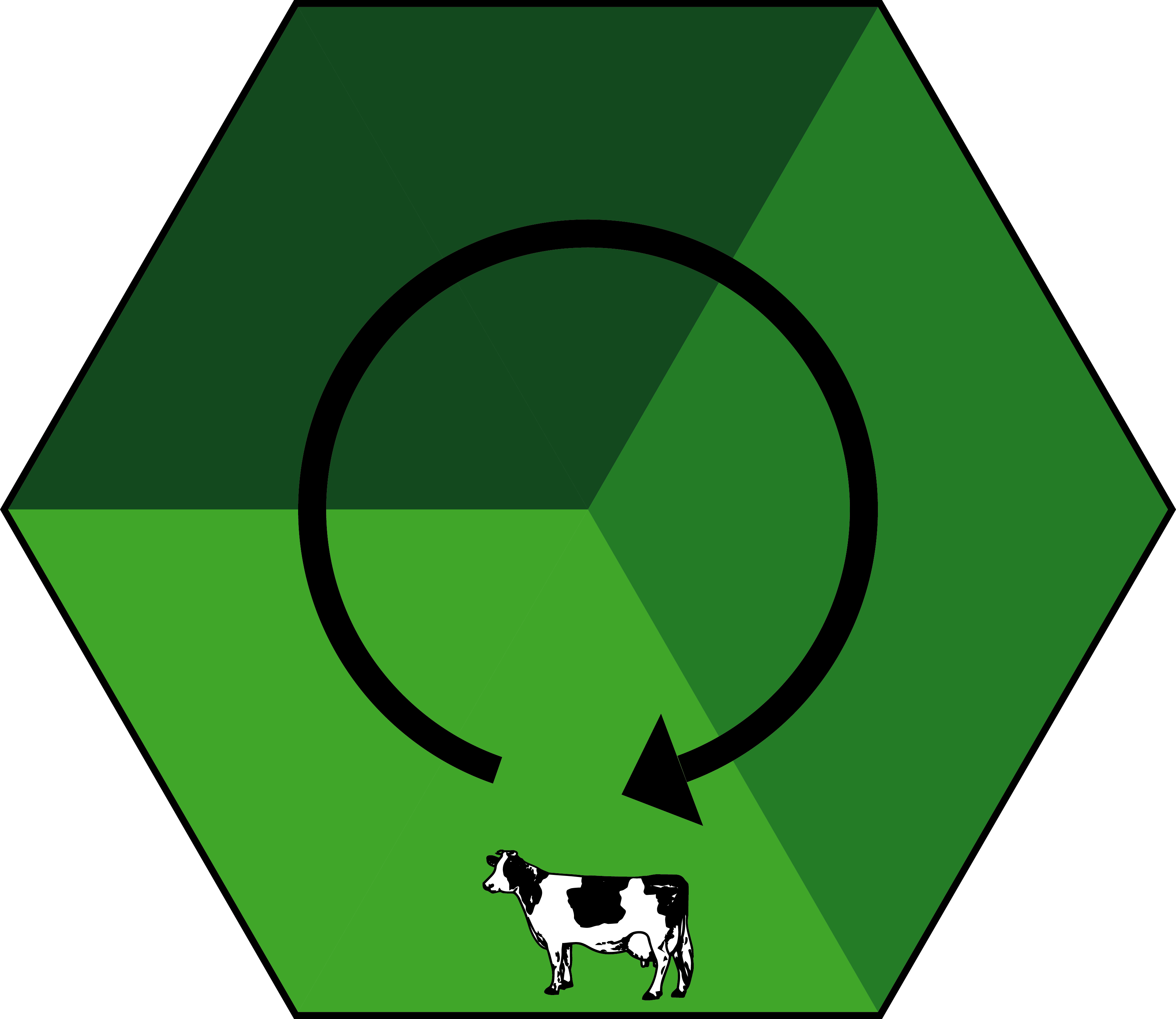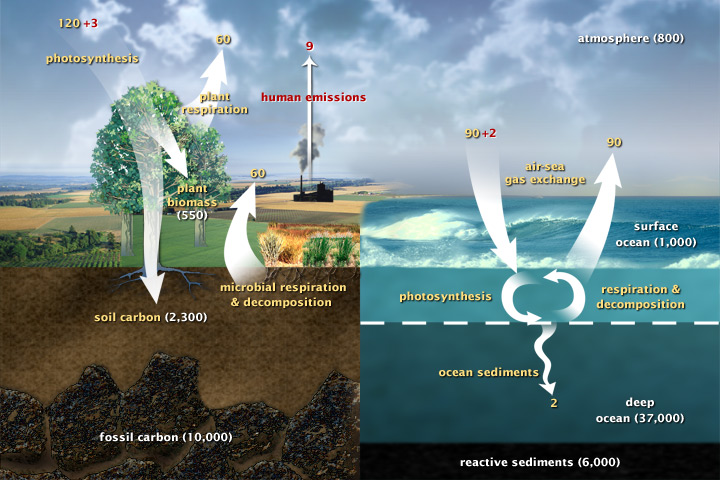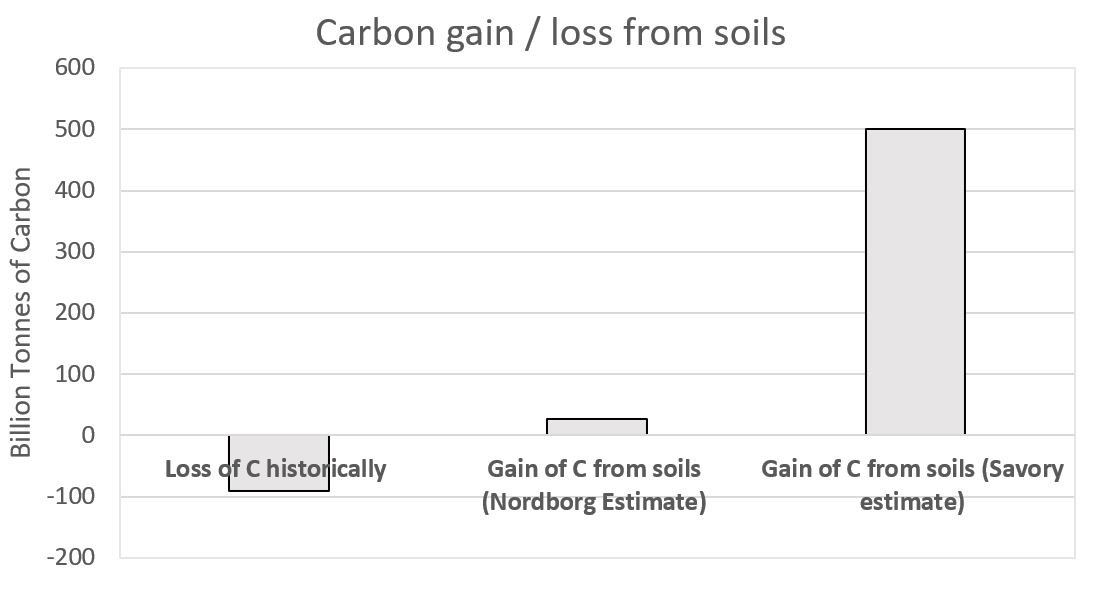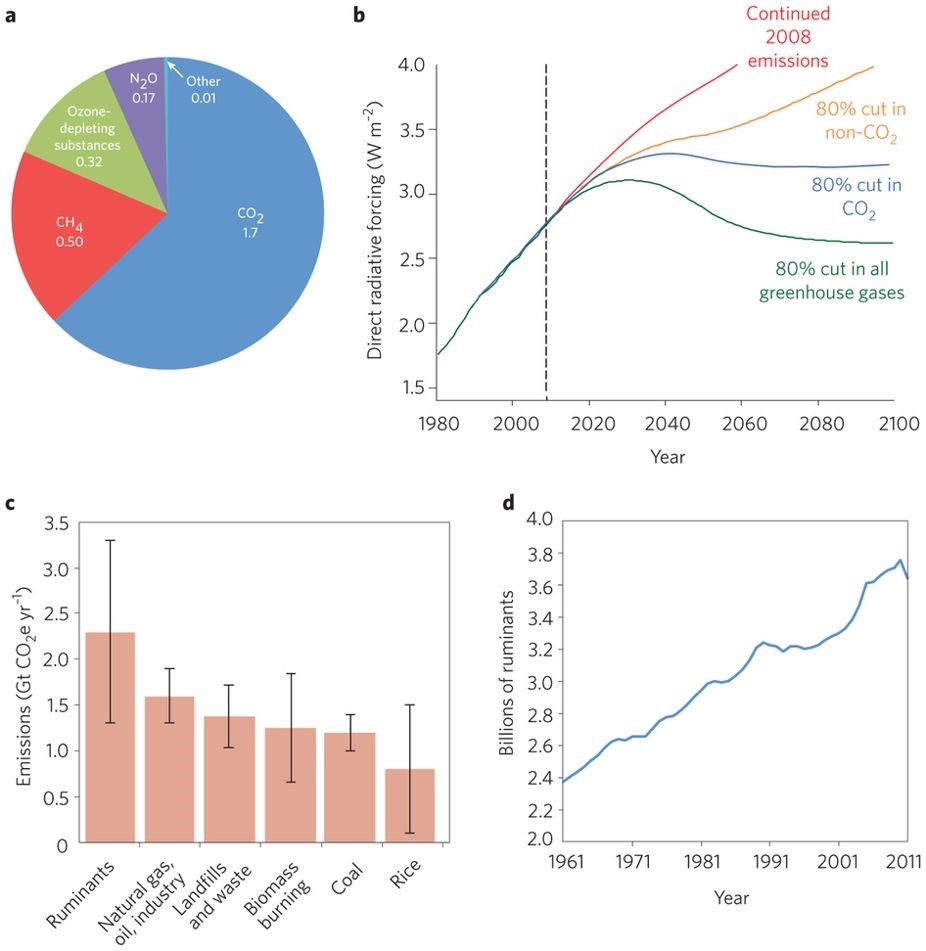 Arguments
Arguments
 Software
Software
 Resources
Comments
Resources
Comments
 The Consensus Project
The Consensus Project
 Translations
Translations
 About
Support
About
Support


Latest Posts
- Fact brief - Is climate change a net benefit for society?
- Skeptical Science New Research for Week #16 2025
- Climate Adam: Climate Scientist Reacts to Elon Musk
- Sabin 33 #24 - Is wind power too expensive?
- EGU2025 - Picking and chosing sessions to attend on site in Vienna
- 2025 SkS Weekly Climate Change & Global Warming News Roundup #15
- Fact brief - Is the sun responsible for global warming?
- Skeptical Science New Research for Week #15 2025
- Renewables allow us to pay less, not twice
- Sabin 33 #23 - How much land is used for wind turbines?
- Our MOOC Denial101x has run its course
- 2025 SkS Weekly Climate Change & Global Warming News Roundup #14
- Fact brief - Is Mars warming?
- Skeptical Science New Research for Week #14 2025
- Two-part webinar about the scientific consensus on human-caused global warming
- Sabin 33 #22 - How does waste from wind turbines compare to waste from fossil fuel use?
- Clean energy generates major economic benefits, especially in red states
- 2025 SkS Weekly Climate Change & Global Warming News Roundup #13
- Skeptical Science New Research for Week #13 2025
- Climate skeptics have new favorite graph; it shows the opposite of what they claim
- Sabin 33 #21 - How does production of wind turbine components compare with burning fossil fuels?
- China will need 10,000GW of wind and solar by 2060
- 2025 SkS Weekly Climate Change & Global Warming News Roundup #12
- Skeptical Science New Research for Week #12 2025
- Climate Fresk - a neat way to make the complexity of climate change less puzzling
- Sabin 33 #20 - Is offshore wind development harmful to whales and other marine life?
- Do Americans really want urban sprawl?
- 2025 SkS Weekly Climate Change & Global Warming News Roundup #11
- Fact brief - Is waste heat from industrial activity the reason the planet is warming?
- Skeptical Science New Research for Week #11 2025
Archived Rebuttal
This is the archived Advanced rebuttal to the climate myth "Holistic Management can reverse Climate Change ". Click here to view the latest rebuttal.
What the science says...
|
Multiple scientific studies from climate scientists and agricultural specialists show little or no significant gain in carbon sequestration on soils managed holistically to those with other grazing techniques. Even under the most favourable condit |
When Allan Savory gave his TED talk in March 2013, his philosophy of Holistic Management as a tool to reverse climate change was presented to a global audience. His bold claims of reviving deserts by simply using cattle to “mimic nature”, greening arid land and boosting productivity of farms globally, seemed a miraculous solution to the growing problem of desertification. Many people, especially farmers, have invested in his idea and firmly believe in it. However, carbon scientists and climate experts were sceptical.
What is Holistic Management?
Holistic Management (HM) was coined by ecologist Allan Savory and is termed as a “planning system that helps farmers, ranchers and land stewards better manage agricultural resources in order to reap sustainable environmental, economic, and social benefits”. It aims to strategically ‘mimic nature’ through planning, monitoring, and calculating factors which influence the grazing plan. Whilst these appear to be a good approach to cattle farming, there is little evidence or accurate description about how exactly HM works (Figure 1); and can work well enough to yield high productivity and carbon sequestration rates compared to other grazing techniques.

Figure 1: A basic summary of how Holistic Management (HM) works. A set stock group graze on land continuously for a period between 1-5 days (lightly coloured grass) and are then shuttled to a section of land which has been allowed to rest for around 2 months since grazing last occurred (Darkest coloured grass). The cattle are shuttled quickly between systems to ensure trampling of soil and supposed increase of water filtration. This system ensures that grass has long recovery time before it is grazed, and cattle are less selective in the grass they eat compared with continuous grazing. HM has several similarities to short duration grazing and intensive rotational grazing (Undersander DJ et al, 2002). Source: Vaughan S, 2019.
It has been proven that excessive continuous grazing with high stocking rates is a form of mismanagement, accelerating carbon depletion in previously carbon-rich soils and increasing the risk of desertification (Nordborg, 2016). The Savory Institute has claimed that grazing under Holistic Management is superior to continuous grazing. Savory has claimed over two-thirds of the world’s ice-free land is at risk of desertification, and only the use of HM can stop this process. He claims that 500 billion tonnes of carbon can be stored on roughly 5 billion hectares of land managed holistically over a period of 40 years, assuming soil can sequester carbon at a rate of 2.5 tonnes of carbon per hectare per year (Nordborg, 2016). Coincidently, 550 billion tonnes of carbon have been released since the start of the industrial revolution. Therefore, Savory has branded Holistic Management as a solution for climate change. To fully assess these claims made, it is important to consider how exactly atmospheric carbon can be converted into soil organic carbon. This involves looking at the carbon cycle, previous studies of Short Duration Grazing (SDG) and Intensive Rotational Grazing (IRG), and carbon sequestration data from managed soils.
Soil Carbon and the Carbon Cycle

Figure 2: The fast carbon cycle, showing the interchange of carbon between the atmosphere, land and the ocean. White numbers indicate stored carbon, yellow numbers indicate natural fluxes and red numbers are human contributions. Carbon is measured in gigatons per year (Source: NASA – The Carbon Cycle).
Soil is a major contributor to carbon storage in both the fast and slow carbon cycle (Figure 2). Whilst the slow carbon cycle takes 100-200 million years to move carbon between rocks, soil, oceans and the atmosphere, the fast carbon cycle takes approximately a lifetime(NASA). Plants and phytoplankton are the main drivers of the fast cycle, and oxygen is combined with sugar to release water, carbon dioxide and energy. The atmospheric CO2 is then fixed via photosynthesis into plant biomass. Soil carbon materialises because of direct growth and death cycles of plant roots and symbiotic relationships with mycorrhizae fungi, where proportions of carbon dioxide are lost through microbial respiration, and some of the original carbon is stored as humus (Ontl, T. A. & Schulte, L. A., 2012). If carbon input from photosynthesis exceeds carbon loss, the level of soil organic carbon increases over time. An average of 81% of carbon in the earth’s biosphere is estimated to be present in soil, with the remaining 19% stored in plants (IPCC, 2000).
The ratio of Soil Organic Carbon (SOC) and Soil Inorganic Carbon (SIC) is important in soil globally and particularly relevant to arid regions. SOC content plays a key role in preventing erosion of soils, temperature balance, increasing water retention and acting as a source of essential plant nutrients (Lal, 2004). Because of the low SOC content in arid regions, this plays a part in the increased risks of desertification. Lal (2004) coincidingly states that loss of SOC content is increased by accelerated soil erosion and mineralisation, on sloped soils and flat soils respectively, and that “global hotspots” of soil degradation are South Asia, the Andean Region, Central America, sub-Saharan Africa and the Caribbean. Not only this, but severely eroded soils are said to have lost between a third to two thirds of their original carbon pool, something which is commonly observed in tropical regions. In this case, improved management techniques are required to try and slow this SOC decline, but grazing may not be the answer. In addition, focus should be put onto slowing this existing decline, opposed to attempting to rescue soils with very little of their original SOC left.
Studies of similar grazing systems show little or no benefit to soil
As described in Figure 1, HM is synonymous with SDG and IRG. Several reviews of both SDG and IRG have provided evidence that intensive, short duration systems have damaging effects on soil, rather than beneficial effects. A review on the effects of SDG in 1999 (Holechek et al, 2000) found water infiltration was significantly reduced following hoof action of ruminants, and a detailed 5-year study in Canada (Dormaar et al. 1989) stated that hoof action did not significantly increase incorporation of litter into soil. This directly contradicts the apparent importance of hoof action in the HM technique. Further evidence comes in the form of nine out of ten studies in North America, which found SDG had no benefit in terms of livestock productivity. In addition, a similar report of over 50 grazing studies in Africa found little differences in productivity between continuous and SDG systems (Holechek et al. 2000).
What is interesting about these studies is that most of the research on SDG was published from 1980-2000 and found no credible results to support SDG and its supposed benefits over other management techniques. Considering the negative findings of these studies, it is no surprise that several forms of current “evidence” listed on the Savory website come in the form of anecdotal quotes from ranchers. Their testimony is most likely due to a productive year with high precipitation and therefore higher productivity (Holecheck, 1996); rather than a direct result of implementing HM. Furthermore, the HM technique has no set limits on stocking rates. Naturally, higher stocking rates – combined with favourable environmental conditions – will lead to increased profits for the ranchers directly, so if a good year happens to coincide with implementing HM, then it reflects well on HM as a grazing technique. However, it is important to focus on what the science tells us, and that is that SDG itself is not beneficial for Soil Organic Content (SOC) or soil productivity. It is dependent on factors out of direct control.
Carbon sequestration is dependent on several factors
Carbon Sequestration is defined as the uptake of atmospheric carbon dioxide via photosynthesis, which is stored in the form of carbon and dead organic matter in soil (Lal, 2004), and its rate is dependent on the type, usage and treatment of the land. From the carbon cycle, there is certain evidence that soil carbon can act as a substantial carbon sink. In relation to HM, the supposed increased carbon sequestration achieved using Holistic Management allows a huge proportional of atmospheric carbon dioxide to be locked away in soil (Nordborg, 2016).
There are several reasons why HM cannot achieve his high sequestration rate. The primary reason is that carbon sequestration is not a simple concept. It is dependent on climate, temperature changes, history of grazing and soil nutrient content, among other factors.
Temperature has a large influence on carbon sequestration. With increasing temperature, the likelihood is that carbon loss from soil will outweigh carbon storage. There is a higher tendency for slower plant growth over a longer growing season, and drier, warmer soil that will likely release CO2 and methane into the atmosphere. This will create a net release creating a positive feedback loop for carbon loss (Johnston, C. et al. 2004).
Extending this viewpoint, one could argue that increasing CO2 will lead to increased photosynthesis and in turn, increased plant productivity and eventually higher rates of retention and sequestration of carbon in soils which currently lie in colder climates. This argument is supported by White et al (1999), where he states increased temperature and rainfall decrease may benefit boreal forest regions, and by various sources which agree that longer growing seasons in Northern Europe and America will improve harvests and may introduce new beneficial species (Sohlenius and Bostrom, 1999; Kleemona et al 1995). On the contrary, increased temperature will most likely prove detrimental to SOC content. Increased mineralization and susceptibility to soil erosion (Dalias et al, 2001) will be a common occurrence in less temperate regions. The soil will crust, have increased water runoff on the surface, and become less likely to store water, carbon, and other important nutrients. Moreover, and perhaps the most significant, is that peat and organic soils will add to growing carbon dioxide emissions with increasing temperature, switching from a carbon sink to a source.
Another problem with studies claiming large sequestration rates in soils is that soil is a sensitive, living environment. It is combined of fungi, macro and microfauna, animal matrix products, dead and living plant matter, all held within a matrix of several states (Johnston et al, 2004). Thus, measuring carbon sequestration in a living environment, which typically requires disturbing the soil, will likely give several false positives. Compared to this, simulations of carbon loss and gain in soils are not a much better solution to this problem.
Carbon is lost over time
As reported by Smith (2004), soils globally have lost somewhere between 40 and 90 billion tonnes of carbon historically, with the IPCC estimating around 30 billion tonnes have been lost from terrestrial ecosystems since the start of the industrial revolution. Even should these soils, under better management techniques, be able to re-sequester 90 billion tonnes, it accounts for only 16% of carbon emissions since the beginning of the industrial revolution(Nordborg, 2016). Soils also have varying degrees of carbon sequestration potentials. Global studies of potential of grassland soils to re-sequester carbon ranged from 0.5-1.9 billion tonnes of carbon per year (Lal, 2001 & 2004, Petri et al. 2010), with the upper limit equal to 20% of current emissions.
Several long-term studies of carbon sequestration and soil organic carbon content have also been conducted on grasslands. Two examples were studies of Soil Organic Content (SOC) in European grasslands over 10-50 years (Schrumpf et al. 2011) and a review of experimental soil carbon data from grasslands in the UK over a period of 25 years (Bellamy et al. 2005). Considering that European grasslands are not one of the areas that Savory has targeted for implementing large scale HM – as it is not at risk of desertification – it seems likely that positive sequestration rates would be expected, and thus giving HM a better chance of success compared to a harsher climate. However, no such results were apparent. The studies concluded that there was no significant change in SOC stocks (Bellamy et al. 2005) or that there was no clear trend in sequestration; decreases, increases, and periods of relative stability were observed (Schrumpf et al. 2011).
Realistic estimates of HM’s potential are 18 times less than Savory’s estimate
An extremely generous estimate for carbon sequestration on soils managed holistically was proposed by Nordborg. She uses the most optimistic assumptions such as:
- HM applied to 1 billion hectares worldwide;
- Plant growth measured as Net Primary Productivity (NPP) above and below ground is 3.8 tonnes of C per ha and year before introduction of HM;
- NPP doubles following implementation of HM;
- 10% of NPP is sequestered in the soil in the first year;
- Soil carbon sequestration declines from 10% to 2% to 0% after 50 years and then 100 years respectively.
Factors such as NPP rate at 3.8 tonnes of carbon per ha and year are based on the most optimistic rates, as the likelihood of this rate observable in grasslands worldwide is likely to be around 1.7 tonnes, and plant productivity is limited by temperature and precipitation in climates around the world (del Grosso et al. 2008). Another factor to consider is increasing anthropogenic carbon emissions and climate (see below). However, using the assumptions, a calculation of 26.5 billion tonnes of carbon was produced, which is approximately 4.8% of the total emissions of carbon since the industrial revolution. What is more staggering, is that this is 18-fold times less than the estimate proposed by Savory.

Figure 3: Graph displaying the billions of tonnes of carbon potentially gained on soils using Holistic Management on either 5 billion hectares of land over a period of 40 years (Savory Estimate) or 1 billion hectares of land over a period of 100 years using generous estimates (Nordborg Estimate). This is compared to the 90 billion tonnes maximum that is predicted to have been lost from soils (Smith, 2004) since the Industrial Revolution.
For a more appropriate assessment, this data could be compared to one of the Savory Institute’s ‘scientific studies’ that back up his claims. One explanation offered on the Savory Institute website is that of Itzkan (2014), where the upper limit of 2.4 tonnes of C per ha and year, over 3.5 billion ha, is based on before and after photograph inspection of the soils by the author. One of many “methods” which Savory has stated as reliable in backing up HM’s capability have included before and after photographs, anecdotal reports, and non-peer reviewed reports. These make up 26 papers of the 40 published on the website. (Savory Institute, Nordborg, 2016).
Methane emissions from livestock is overlooked
Methane (CH4) is an extremely potent greenhouse gas. It has an atmospheric lifetime of around 12 years and offers the largest potential for reduction in radiative forcing when compared to CO2. The ability of CH4 to absorb infrared radiation is 20-30% greater than CO2. Ruminants are the largest contributor of anthropogenic methane emissions and livestock production occupies the most land globally than any other land use (Ripple et al. 2014). The number of ruminants on earth, as of 2011, was estimated to be around 3.6 billion domestic ruminants, and an unknown, far lower number of wild ruminants. The number of ruminants is on average increasing by 25 million per year (FAO). Demand is also on the rise, with a projected increase of 69% consumption of beef on global scale (FAO). However, Holistic Management believes the idea of increasing ruminant population will not have an overall impact on climate change. Continually, an article on the Savory Institute website states several reasons to explain this, such as:
- Oxidation of methane by soils represents 10% of the total methane sink.
- Large pre-agricultural populations of ruminants had methane levels cycling consistently between 350-750ppb.
- Methanotrophic bacteria break down roughly 1 billion tonnes of methane each year on well managed soils.

Figure 4: Figures a-d show the link between methane emissions and livestock, taken from Ripple et al (2014). a, Estimates of direct radiative forcing in 2008 for CO2 and non-CO2 greenhouse gases from anthropogenic sources. b, Projections of radiative forcing in four different scenarios: constant future emissions at 2008 levels (red); 80% reduction in only non-CO2 emissions (orange), 80% reduction in only CO2 emissions (blue), and 80% reductions in both non-CO2 and CO2 emissions (green). c, Estimated annual anthropogenic emissions from major sources of methane in recent years. Error bars represent 1 standard deviation. d, Global ruminant numbers from 1961 to 2011.
Atmospheric methane levels have more than doubled from 1750 to 1999. Its concentration has increased from 700ppbv to 1745ppbv and is steadily increasing at a rate of 7ppbv/year (IPCC, 2001). This is directly correlated with a steading increase of ruminants worldwide (FAO), natural gases, landfill, coal and the rice industry (Figure 4, Heilig, 1994), and increasing climate change is also likely to have played a part in releasing pools of methanetrapped in the oceans and under thawing permafrost (NASA). The Savory Institute’s point of methane cycling between 350-750ppb is true, and while the populations of wild ruminants is unknown and likely to be large, it is not as large as current farmed ruminant populations. A study by Hristov (2015) in the United States concluded that enteric CH4 emissions by presettlement ruminants, such as elk, deer and bison (estimated at 50 million) is 86% of the current emissions by farmed ruminants. As the level is similar, it seems likely that the shift occurring today in methane emissions is due to increase of ruminants combined with change in land use – especially in tropical regions, where native forests are cleared to make way for animal feed crop and grazing land – helped with the increase in climate change, which accelerates the loss of carbon from mismanaged soils.
Alternative non-grazing solutions offer more scientific promise
There are numerous scientific studies which agree that better management techniques can aid carbon sequestration in grasslands, improve soil organic content (SOC) and slow desertification (Follett, Kimble and Lal, 2001, IPCC, 2007, Jones, 2010). There are a few studies which showed that different management techniques, other than grazing, could influence the carbon sequestration rate of soil. In a study by Conant et al (2001), some of the 115 studies worldwide produced results of high carbon sequestration rates for some management practices, such as a conversion of cultivation to pasture, improved grass species and earthworm introduction. However, there are problems in stating this data as reliable. Grass species was the subject of one study (Fisher, 1994). The cultivated to pasture switch is likely to have a high rate due to restoring carbon lost in the previous conversion, and introduction of earthworms was the subject of two studies and is dependent on soil type. These studies are subject of very specific conditions and the results are not repeatable. In addition, the most important fact is that sequestration rates will be high in the first few years, in line with Nordborg’s estimate (Figure 3), but over an extended period carbon release is likely to increase with carbon storage. Therefore, it is not applicable to include “reliable” data on this matter if the study has lasted less than 40 years. For this reason, data from studies such as Schrumpf et al. 2011 is more reliable. Despite this, a more promising solution would be to conduct long term studies on grassland over long periods, using management practises listed in Conant’s paper and perhaps more techniques appropriate for the specific nature of the soils studied. For this reason, HM should be assessed long term alongside these studies.
Conclusions
From the wide range of scientific studies conducted into carbon sequestration in soils, contribution of ruminant methane emissions to the greenhouse effect, and the effect better grazing management has on productivity, there is little to suggest that HM has any significant contribution – positive or negative – on increasing carbon sequestration in soils both at risk or not at risk of desertification, or that it is any better than other similar grazing techniques implored on soils. From the research conducted into this topic, several conclusions are presented:
- Holistic Management, or any other grazing method, alone cannot reverse climate change – and at most, can slow the current rate of emissions over a limited period by less than 5% over a 100-year time-frame.
- The potential of soils to sequester atmospheric carbon is primarily dependent on climate and nutrient balance, and not grazing.
- Long term studies of carbon sequestration in grasslands show no overall loss or gainof carbon under favourable climate conditions.
- Methane release by domesticated ruminants is extortionate and has a significant effect on increasing the greenhouse effect.
- Allan Savory’s claims and statistics about the potential of HM on desertifying grassland are based on assumptions and anecdotes are therefore not scientifically reliable, repeatable or valid.
Updated on 0000-00-00 by Seb V .
THE ESCALATOR

(free to republish)
























































